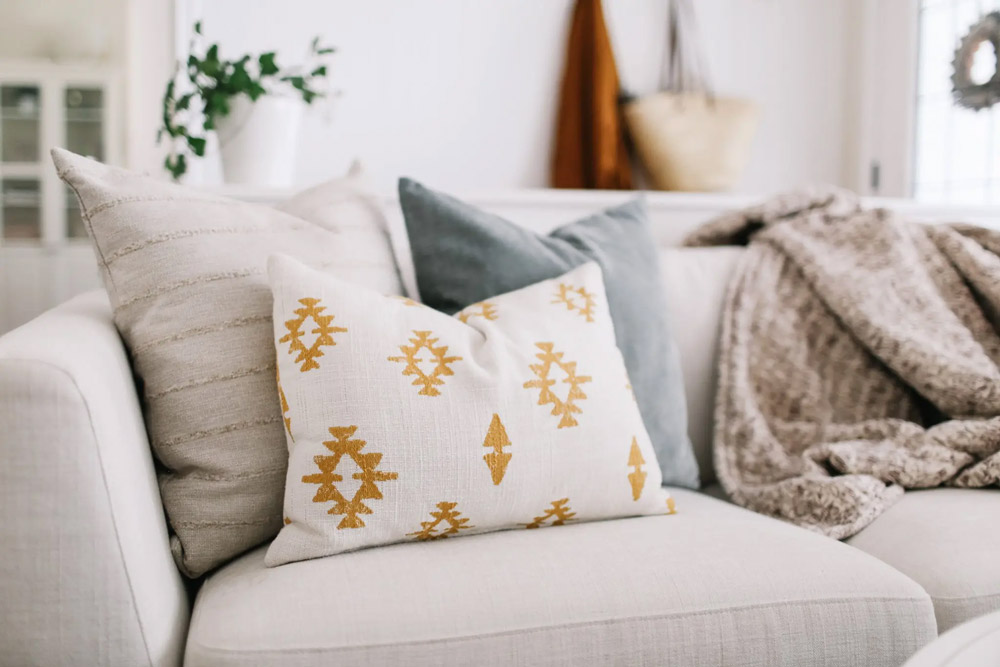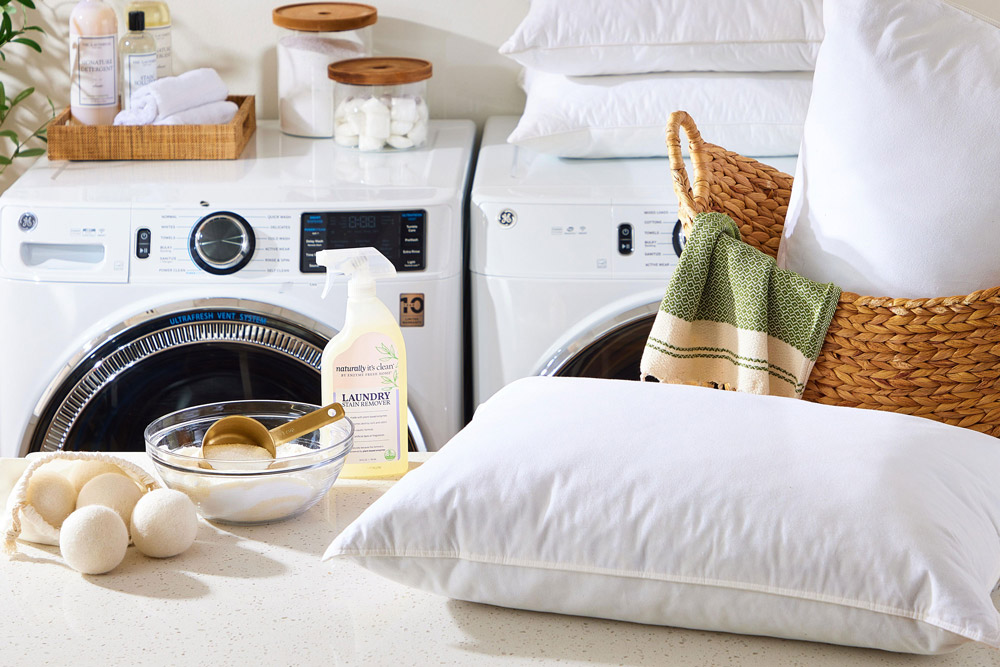Decorative pillows add comfort, style, and personality to sofas, beds, and chairs. While they’re often chosen for their aesthetic value, they also collect dust, body oils, pet hair, and allergens over time. Naturally, many homeowners wonder: Can decorative pillows be washed?
The answer is yes—most decorative pillows can be cleaned—but the method you use depends on several factors such as the fabric type, type of insert, whether the cover is removable, and manufacturer care labels. Improper cleaning can ruin the fabric, distort the shape, or damage the fill. Here’s everything you need to know to wash your decorative pillows safely and effectively.
Contents
What Are Decorative Pillows?
Decorative pillows, also known as throw pillows or accent pillows, are used to enhance the look of furniture or a room. They come in a wide variety of shapes, sizes, fabrics, and fillings. Common fabric choices include cotton, polyester, linen, velvet, silk, and faux leather. Insert fillings can range from inexpensive polyester fiberfill to down feathers, foam, or memory foam.
Some decorative pillows have removable covers with zippers or buttons, while others are sewn closed. These structural differences significantly influence how the pillow can be cleaned.

Can Decorative Pillows Be Washed?
In general, many decorative pillows can be washed, but not all should be machine-washed. The safest approach is to always check the care label first. If the label clearly states “dry clean only” or “spot clean only,” follow those instructions to avoid damaging the fabric or structure.
Key factors that determine how a pillow should be washed include:
- Fabric type: Durable materials like cotton, polyester, and linen can usually withstand washing. More delicate fabrics like silk, velvet, or suede require specialized care.
- Insert material: Polyester inserts are generally safe for machine washing. Down or feather fills can also be washed but require careful drying. Foam inserts, especially memory foam, should not be machine-washed as they can break apart or retain too much water.
- Cover type: Removable covers are easier to clean and may be machine-washable. Non-removable covers may require spot cleaning or hand washing.
How to Wash Decorative Pillows

Machine Washing
Machine washing is often suitable for decorative pillows with removable covers or durable fabric types. Here are best practices:
- Remove the cover if possible and wash it separately.
- Use a front-loading washer or a top loader without an agitator to avoid damaging the pillow.
- Select a gentle cycle using cold or warm water and a mild detergent.
- Wash two pillows at a time (if size allows) to balance the machine load.
- For drying, use low heat with dryer balls or tennis balls to help fluff the pillow. Alternatively, air dry in a well-ventilated area and reshape the pillow while damp.
Hand Washing
Hand washing is safer for pillows with delicate materials or those without a care label.
- Fill a large basin or bathtub with lukewarm water and a small amount of mild detergent.
- Submerge the pillow gently and squeeze (don’t wring) to clean the fabric.
- Rinse thoroughly with clean water until no detergent remains.
- Gently press out excess water and lay the pillow flat to dry.
- Rotate the pillow occasionally while drying to ensure all sides dry evenly.
Spot Cleaning
Spot cleaning is ideal for localized stains or pillows labeled “spot clean only.”
- Blot the area with a clean, damp cloth to remove excess debris.
- Apply a mix of mild detergent and water using a sponge or cloth.
- Blot—don’t rub—the stained area until the spot is lifted.
- Rinse with a clean, damp cloth to remove detergent residue.
- Let the pillow air dry completely before using.
Dry Cleaning or Professional Cleaning
For high-end fabrics like silk, suede, or velvet—or pillows with heavy embroidery, embellishments, or beading—professional cleaning is often the safest option. Dry cleaning preserves delicate fabrics and ensures the pillow’s structure isn’t compromised.
Cleaning Inserts vs. Covers
Many decorative pillows have removable covers that can be washed independently of the insert. For these:
- Wash the cover according to its care label (typically machine wash or hand wash).
- For inserts, follow the material-specific instructions. Polyester and down inserts can often be washed; foam should only be spot cleaned or vacuumed.
If the pillow has no removable cover, assess the fabric and filling to choose the best cleaning method.
How Often Should You Wash Decorative Pillows?
The frequency of cleaning depends on how often the pillows are used and where they’re placed:
- Low-use areas (e.g., guest rooms): Clean every 6 to 12 months.
- High-traffic areas (e.g., living rooms, children’s rooms): Clean covers every 1 to 3 months and inserts every 6 months.
- Households with pets or allergies: Clean more frequently to reduce allergens and dander.
In between washes, vacuuming the pillow or airing it outside can help reduce dust buildup.

Drying and Reshaping
Drying is a critical step in pillow maintenance. Improper drying can lead to mildew, odor, or a misshapen pillow.
- Always air dry or use low heat in the dryer.
- Fluff the pillow regularly while drying to help maintain shape.
- Insert dryer balls or clean tennis balls into the dryer to restore loft to fiberfill or down inserts.
- Ensure the pillow is completely dry before use or storage to prevent mold or mildew.
Fabric-Specific Tips
- Cotton/polyester: Easy to clean, machine washable.
- Velvet: Often requires spot cleaning or professional care.
- Silk or satin: Hand wash or dry clean only; avoid friction.
- Faux leather or suede: Spot clean with appropriate cleaner; avoid saturation.
- Outdoor pillows: Usually designed to be more durable; removable covers are often washable, but inserts may need to be aired out.
Common Mistakes to Avoid
- Ignoring the care label
- Using hot water or harsh detergents on delicate fabrics
- Machine washing foam inserts
- Over-soaking pillows without allowing proper drying
- Storing damp pillows which leads to mold growth
Conclusion
Yes, decorative pillows can be washed—but it requires attention to detail. The type of fabric, filling, and construction all influence how the pillow should be cleaned. When in doubt, always follow the care label instructions. Regular cleaning not only improves hygiene but also helps preserve the pillow’s look, feel, and longevity.
With the right method, you can keep your decorative pillows looking fresh and beautiful for years.

